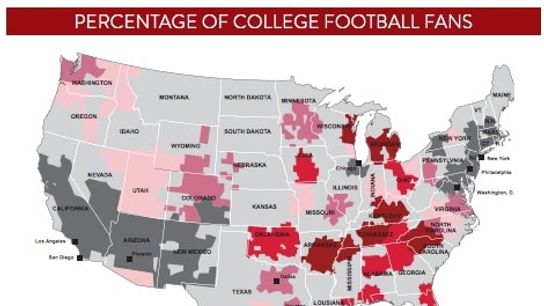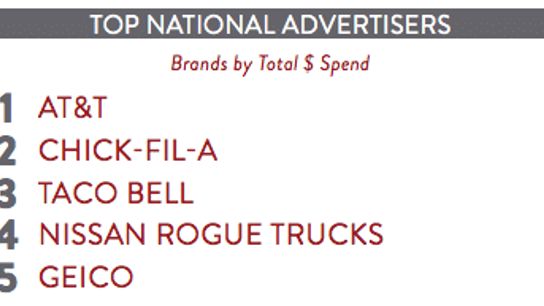They say a bubble in sports television rights is coming. While far be it for me to stand in the collective wisdom of "they," let's fight opinion with fact: in the world of television, sports have never been a more valuable property.
In its annual "Year in Sports Media" report, Nielsen detailed the state of sports on television, leading with this narrative-popping statistic:
The formula is well-known: as DVRs have removed the need to watch scripted programming on a timely basis, live events have increasingly become the only place for advertisers to grab the attention of a captive audience. That means awards shows, political events and, of course, sports. Sports are the only television property that captures (nearly) every demographic in every neighborhood in the country -- and they're on every night of the year.
The only threat to sports TV rights -- and, let's be real, it's a significant one -- isn't that consumers will stop caring about sports, but that they'll stop paying for television altogether.
So while sports have never been more valuable to TV, smart phones and tablets have never been more important to the sports viewing experience.


Smart phones and streaming have freed fans from their couches, specifically as the holidays arrive and regular Sunday routines are interrupted. More and more, fans are watching NFL games as their significant others drag them around Bed, Bath & Beyond.

Looking specifically at college football, Nielsen laid out TV ratings for the New Year's Six. A separate chart with regular season TV ratings would have been nice as well.

Where do college football fans live? The South and Midwest, primarily.

But while ESPN daily -- nay, hourly -- fields complaints of SEC bias, the Big Ten actually delivers better ratings.
If one were to hook ESPN president John Skipper to an IV filled with military-grade truth serum, the guess here is that his dream College Football Playoff would consist of USC, Notre Dame, Texas and Michigan or Ohio State. SEC country is watching the Playoff regardless, but they're not breaking into the New York and Los Angeles markets like USC, Notre Dame and the Big Ten powers.

Nielsen also tallied up the top advertisers on college football broadcasts. Clearly, the typical college football fan takes his Nissan truck, insured by GEICO, to Chick-fil-A or Taco Bell during halftime of an SEC or Big Ten game while checking other scores on his AT&T smart phone.

Finally, let's take a look at how the CFP Championship compares with the ultimate events in other sports:
1. Super Bowl (New England Patriots vs. Seattle Seahawks) -- 114.4 million viewers
2. NCAA Men's Basketball Championship (Duke vs. Wisconsin) -- 28.3 million
3. CFP Championship (Alabama vs. Clemson) -- 25.7 million
4. NBA Finals (Golden State Warriors vs. Cleveland Cavaliers) -- 19.9 million
5. World Series (Kansas City Royals vs. New York Mets) -- 14.7 million
6. The Masters (won by Jordan Speith) -- 14.2 million
7. Daytona 500 (won by Joey Logano) -- 13.4 million
8. Gold Cup Final (Mexico vs. Jamaica) -- 6.5 million
9. Stanley Cup Finals (Chicago Blackhawks vs. Tampa Bay Lightning) -- 5.6 million
10. UFC Fight Night (Gustafsson vs. Johnson) -- 3.0 million
Americans love football, they love stand-alone championship games, and they love sports on network television. Playing the College Football Playoff on ESPN instead of ABC costs the sport viewers; it'll be interesting to see if (and by how much) the NCAA Tournament championship ratings drop when the game moves from CBS to TBS this spring.